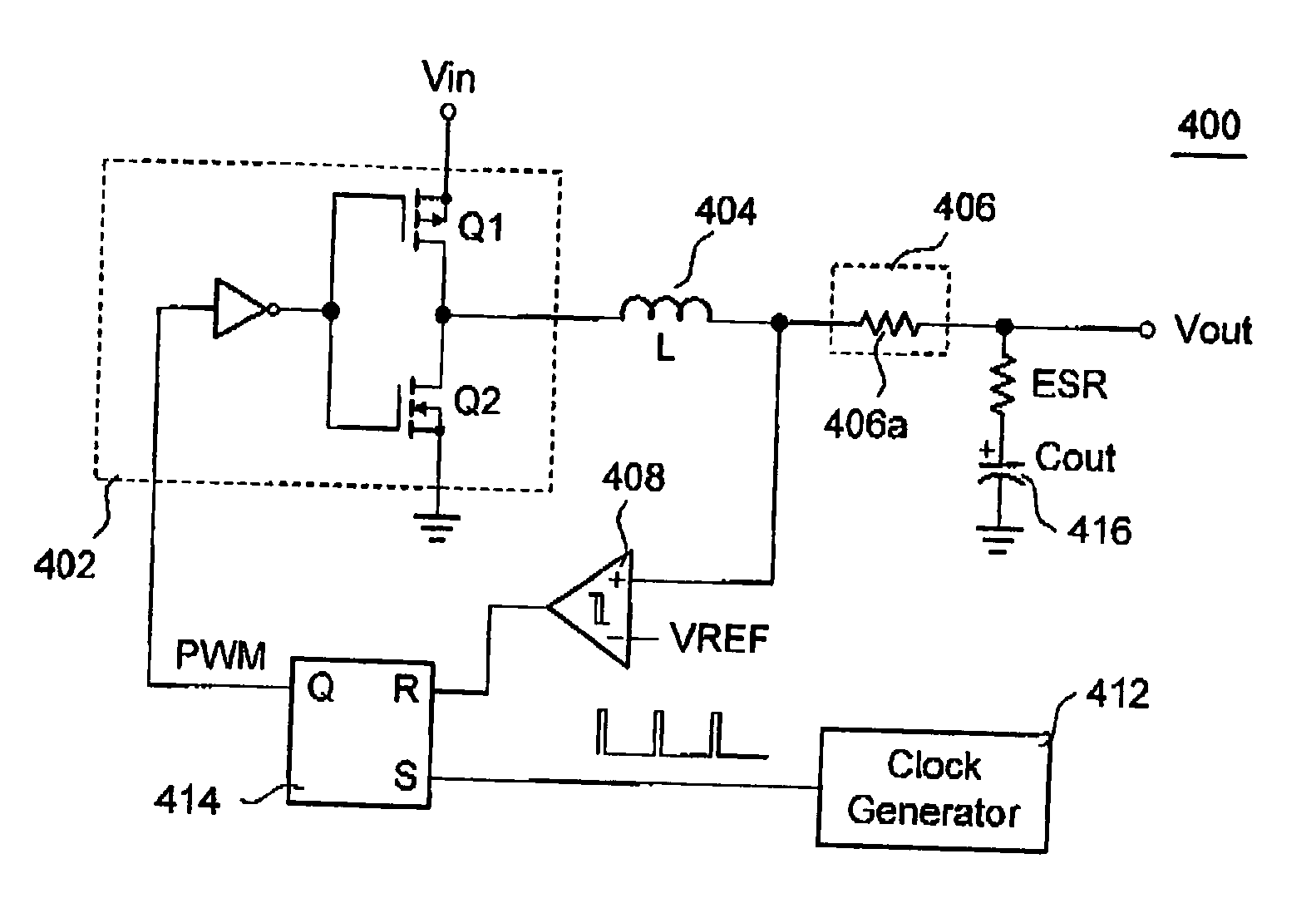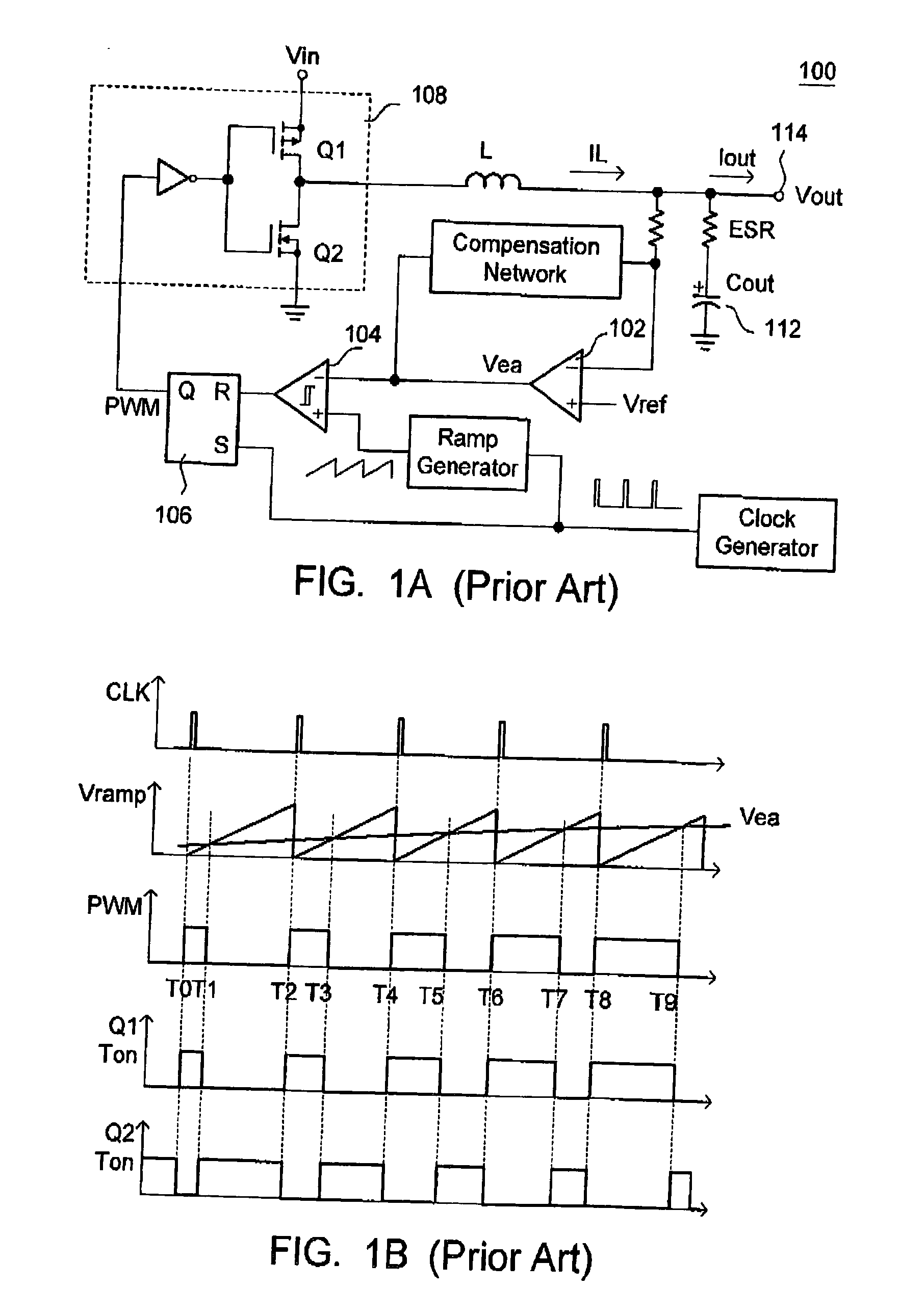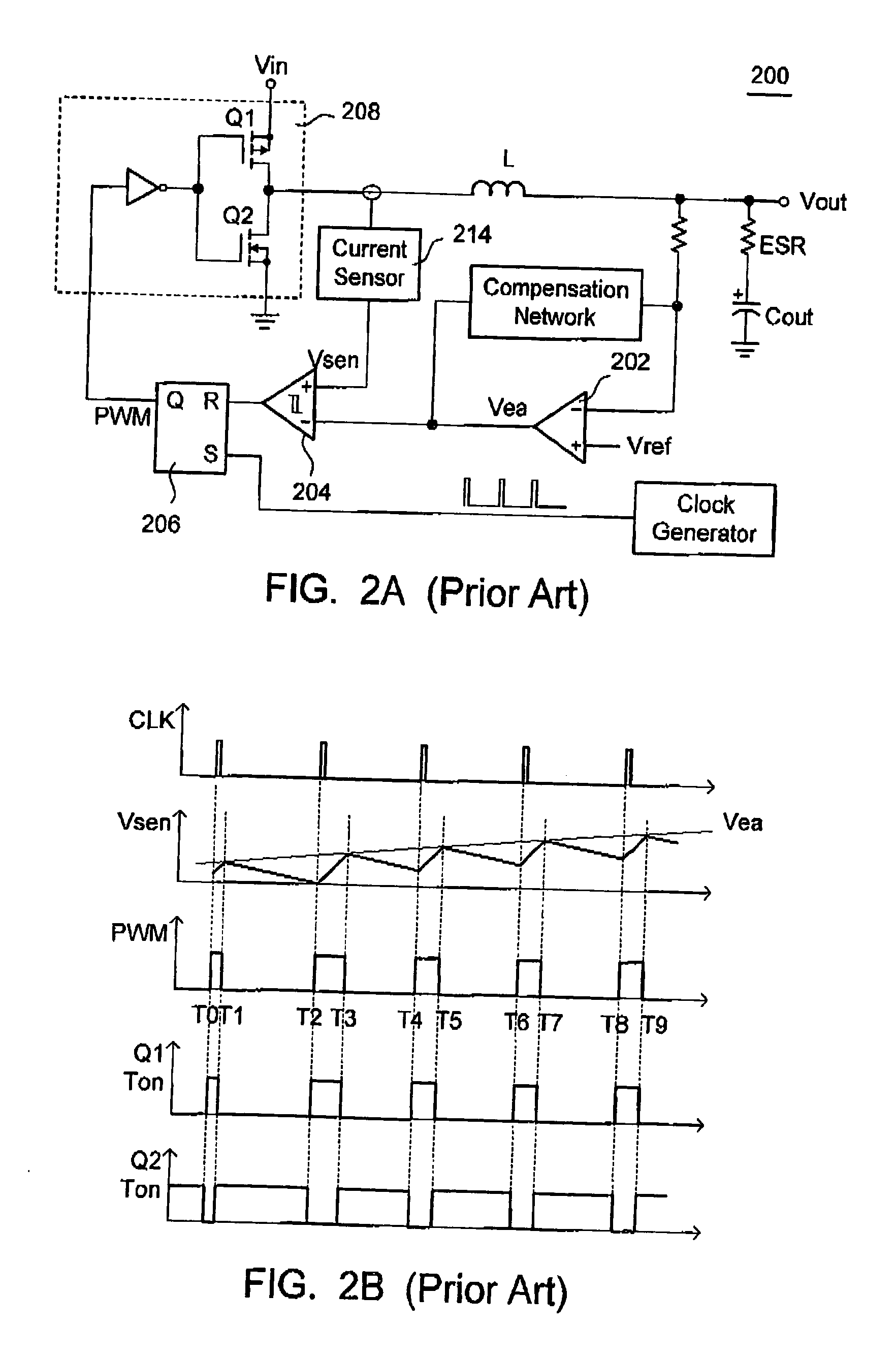Direct mode pulse width modulation for DC to DC converters
a dc converter and direct mode technology, applied in the direction of dc-dc conversion, power conversion systems, climate sustainability, etc., can solve the problems of slow response to load transients, inability to parallel operation of voltage mode pwm converters b>100/b>, and high cost of discrete sensing resistors, etc., to achieve fast transient response, inherently stable, and simple control circuit
- Summary
- Abstract
- Description
- Claims
- Application Information
AI Technical Summary
Benefits of technology
Problems solved by technology
Method used
Image
Examples
Embodiment Construction
[0034] Reference will now be made in detail to the preferred embodiments of the present invention, examples of which are illustrated in the accompanying drawings. Wherever possible, the same reference numbers are used in the drawings and the description to refer to the same or like parts.
[0035] The present invention feeds back the output voltage (Vout) by a voltage sensor, which contains the information of the output voltage (Vout) as well as the inductor DC current. The DC to DC converter of the present invention has a constant switching frequency and supports a low ESR output capacitor. The control circuit of the DC to DC converter is simple, inherently stable, and has fast transient response. Furthermore, the DC to DC converter has inherent current-sharing characteristics, ideal for multi-phase applications, such as several converters operating in parallel.
[0036]FIG. 4A is a circuit diagram of one preferred embodiment of the present invention, and FIG. 4B is a graph illustratin...
PUM
 Login to View More
Login to View More Abstract
Description
Claims
Application Information
 Login to View More
Login to View More - R&D
- Intellectual Property
- Life Sciences
- Materials
- Tech Scout
- Unparalleled Data Quality
- Higher Quality Content
- 60% Fewer Hallucinations
Browse by: Latest US Patents, China's latest patents, Technical Efficacy Thesaurus, Application Domain, Technology Topic, Popular Technical Reports.
© 2025 PatSnap. All rights reserved.Legal|Privacy policy|Modern Slavery Act Transparency Statement|Sitemap|About US| Contact US: help@patsnap.com



